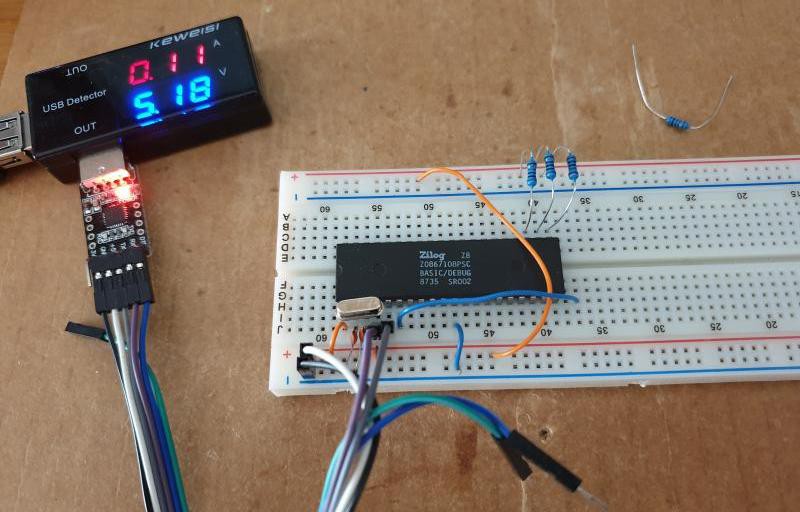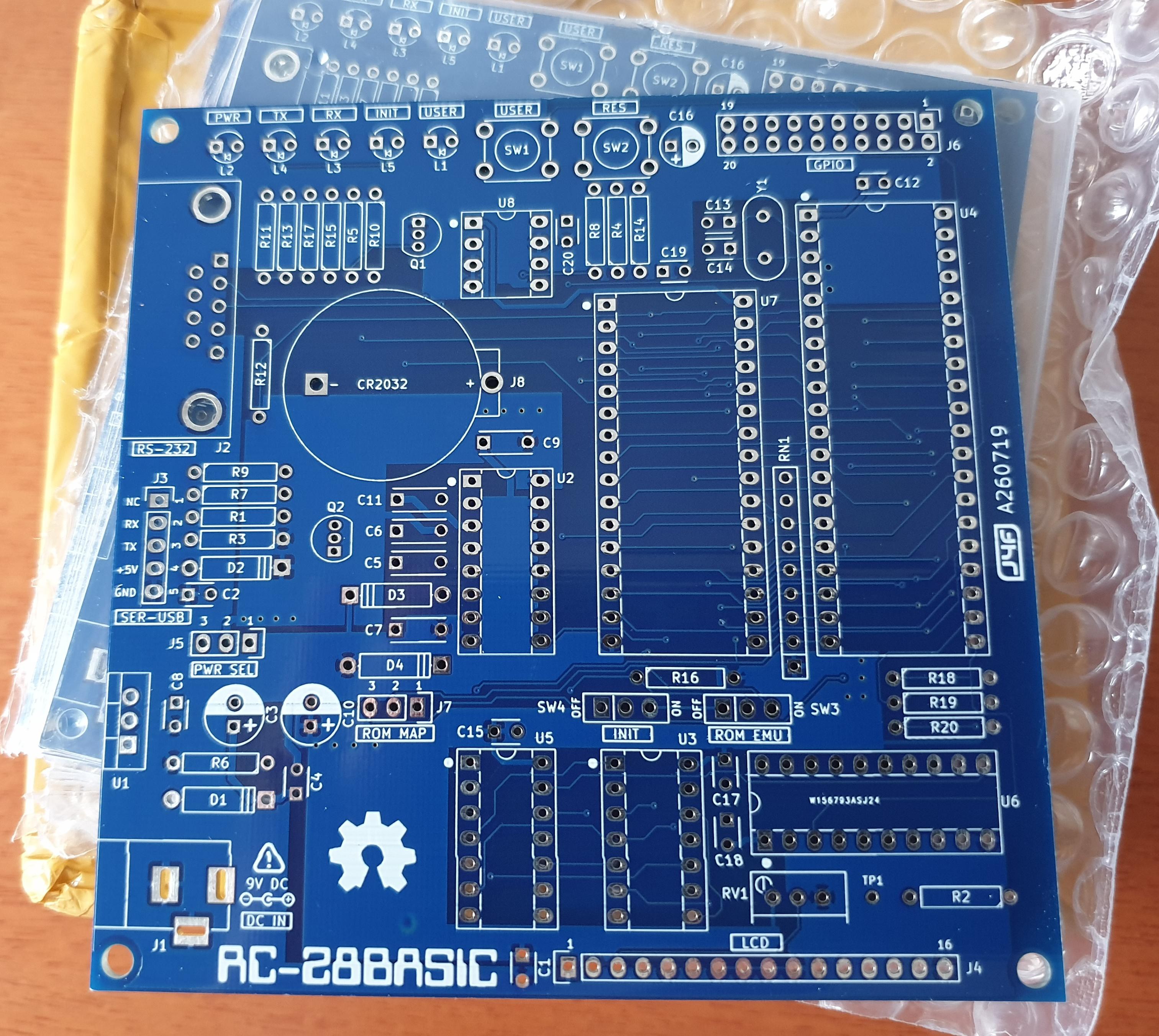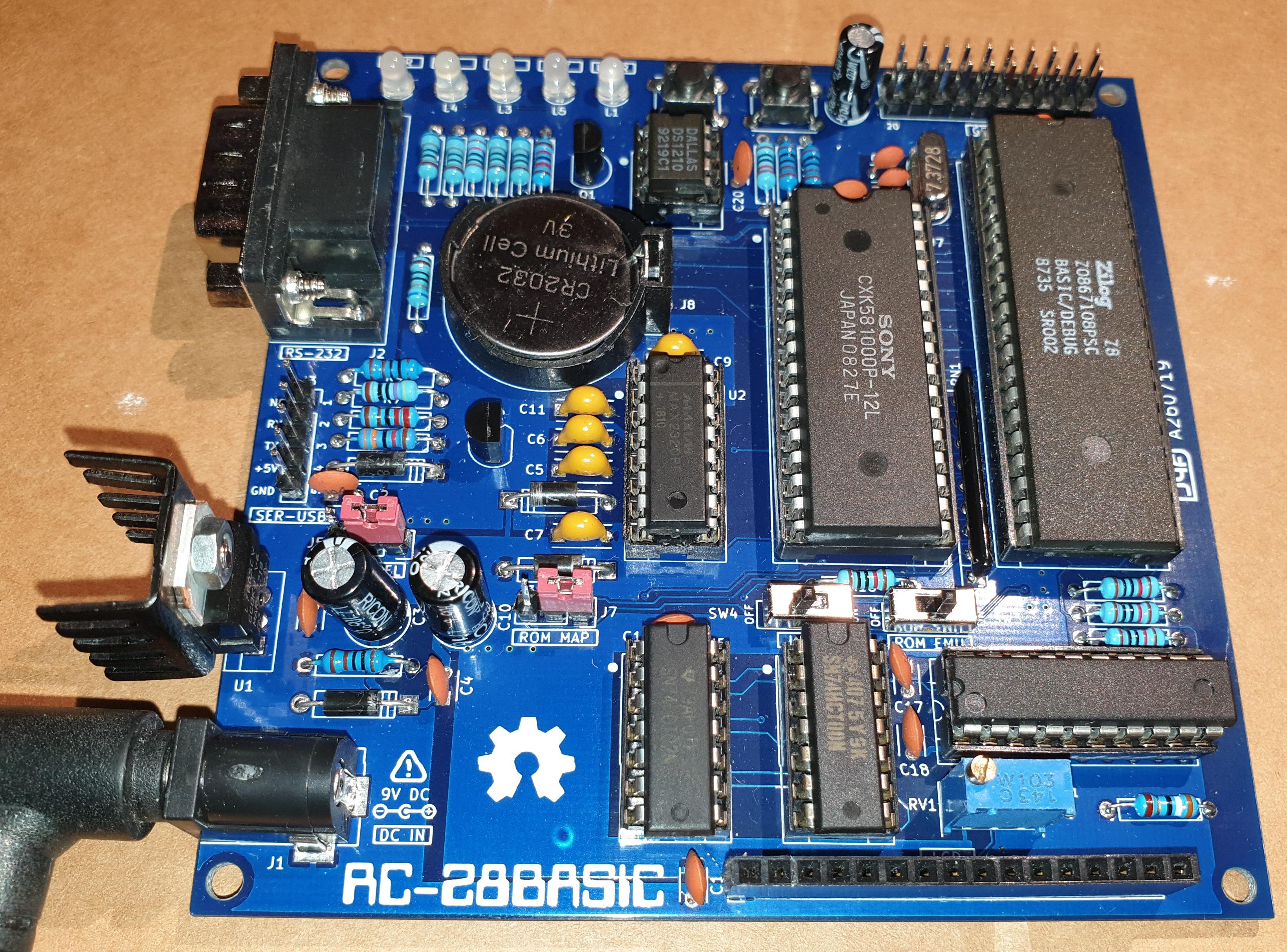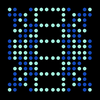* * HARDWARE OVERVIEW * *
NOTE: Before use this board it is highly recommended to read the Z8671 Basic/Debug Software Manual to understand how this MCU works together with the provided BASIC/DEBUG environment.
The specs of the RC-Z8BASIC are:
128KB SRAM with battery backup, RS-232 port, serial-USB adapter port, GPIO port, LCD (1602 or 2004) port, User led and key, on-board power supply, ROM emulation mode to enable the "Auto execution at power-up/reset" feature, can be powered from USB or on-board power supply.
Because this board use only a SRAM with a backup battery for data retention, you don't need any legacy EPROM programmer.


It is possible select a ROM emulation mode to use half the SRAM address space as ROM. When the ROM emulation is active it is possible use the "auto execution at power-up/reset" feature of the ROM Basic inside this MCU.
Two different ROM emulation mode are possible. The selection is done with the J7 jumper.
The first time you power on this board (or after changing the SRAM backup battery) you need to do the "INIT PROCEDURE" to set the wanted baud rate (that is stored inside the SRAM).
The RC-Z8BASIC has a RS232 serial port, but there is also a "transparent" serial-USB connector to use a common serial-USB adapter.
It is possible plug a common LCD module (1602 or 2004) into the LCD (J4) connector, but you have to write the low level driver yourself (but I've already written a demo Basic driver for it...). Note that the LCD connector shares some GPIO of the GPIO (J6) port.
There is also an USER led and a USER key (sharing two GPIO with the J6 GPIO connector too).
You can power the board from the on-board power supply or from USB using a common serial-USB adapter. The selection is made with a jumper (J5). The HW can manage the mixed powering situations when you power the board with the on-board PS (Power Supply) and are using the serial-USB adapter for the serial data link (USB adapter not powered from the host USB while the board is powered, and vice-versa) so you don't need to have care of this detail.
* * SRAM * *
I've used a TC551001 just because is cheap on Ebay. You can use any speed variant (70/85/100ns) or any equivalent 128KB SRAM chip. In the photos I've used another SRAM chip with a speed grade of 120ns without any problem.
* * J5 AND J7 JUMPERS SETTING * *

Please note that the total 128K bytes address space is managed by the DM signal (pin 29 of the Z8 BASIC/DEBUG MCU) that selects one of the two 64K bytes pages available, while the "normal" Z8 address space used for the program and data is 64K bytes large. The "second" Z8 64K bytes page can be used when it is enabled the DM function (see the manual) and can be accessed using a couple of assembler instructions.
 Just4Fun
Just4Fun






ciao Just
ho 10 pezzi del Z8671 ps Basic/dbg chi fosse interessato li metto in vendita .
Ho anche una piastra montata con l'espansione di memoria e un cs vuoto per il processore Intel 8052 e relativo manuale del basic vedi Fare Elettrica aprile 1991